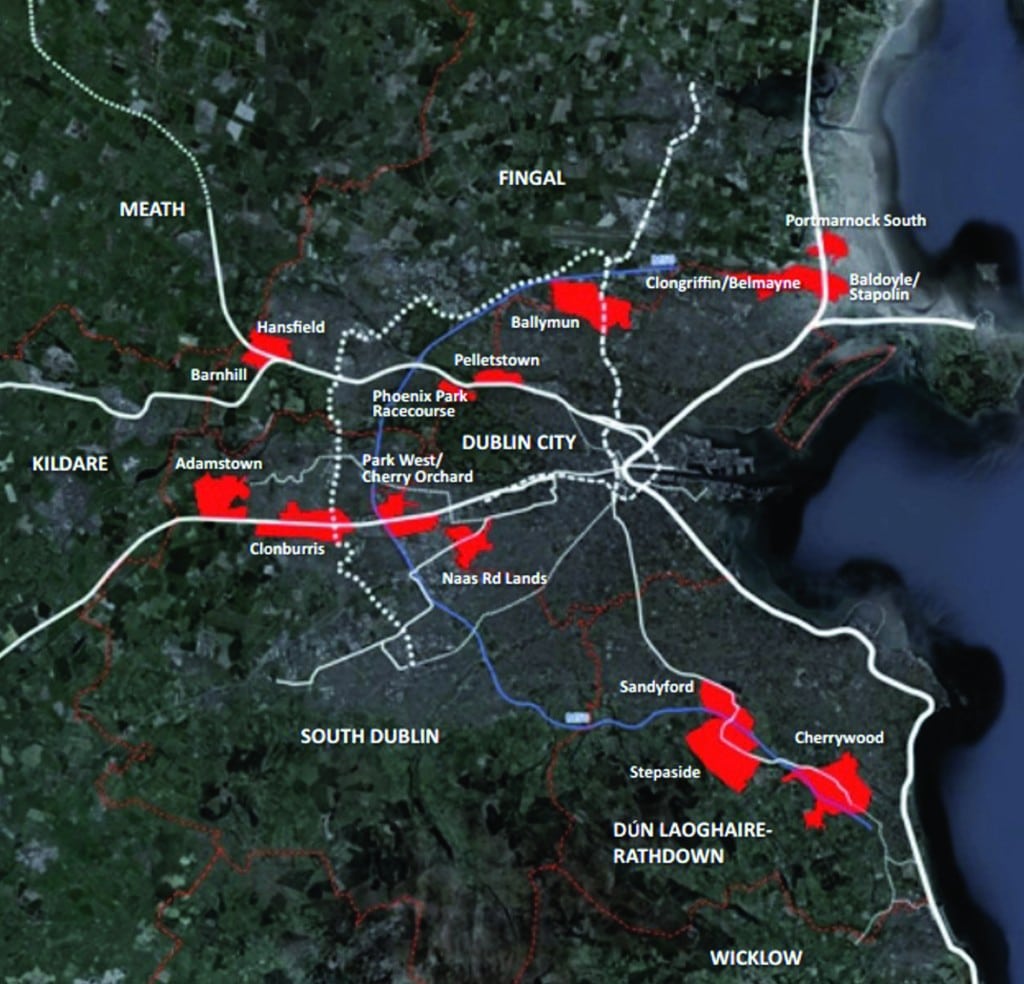By Gavin Daly and Michael Smith
In 2012 Village ranked Colm McCarthy the 22nd most influential person in Ireland. A gruff UCD economist and professional Dub, with the ear of governments and a market-orientation that would pass for Thatcherite were it not for his persona, McCarthy had early stints in the University of Essex, the Central Bank and the ESRI and was the Doyen of the 1980s ‘Doheny and Nesbitt School of Economics’ named after the pub where he drank with colleagues including Seán Barrett, Moore McDowell and Paul Tansey.
In his role as chairman of the Special Group on Public Service Numbers and Expenditure (‘An Bord Snip Nua’) in 2009 he proposed swingeing cuts dressed up as common sense. Surprisingly shy in company he is sharp and witty both privately and publicly and will assail environmentalists and progressives as “Commies”. According to the Irish Independent in 2009 he said that there was “something redolent of Soviet-era central planning about Irish procedures for determining public pay … Bolshevik-style central bodies determine the minutiae of pay and conditions for 350,000 employees nationwide”. He believes the markets can determine fairness provided they allow for externalities, such as environmental and social costs. For example his solution to climate change is to put a proper price on carbon. This does not allow for logistical difficulties and delays in dealing with what is an urgent problem, and the risks of mis-pricing or of half-baked systems. Inevitably McCarthy fails to acknowledge the transcendence of physical sciences such as climatology over social sciences like economics.
He has focused intermittently on planning and the environment. He was an early antagonist of Dublin’s Rapid Transport (DART) and is a general defender of roads, though DKM with him as figurehead did consider the otherwise-unanalysed turn-of-the-century national motorway programme was an “overprovision”. In recent years he has derided national expenditures on incentivising wind farms, new railway programmes and above all in a thesis that he seems to ventilate annually in whatever national newspaper is affording him space, the system of town and country planning based on zoning – for inflating prices. He is wrong. Provably wrong. For how can underzoning be the problem when there is, in fact, overzoning.
McCarthy’s long-standing thesis has been that the planning system (zoning) caused an artificial scarcity in the supply of development land for housing in and around Dublin throughout the Celtic Tiger, inflating a massive property bubble and simultaneously scattering new residential development to the four winds and far-flung corners of the Midlands and beyond. He further maintains that it is these same restrictive practices, with local authority planners and politicians unwilling to confront vested interests and local communities to zone more land, which is the root cause of the current lack of housing supply in Dublin. Instead, McCarthy argues, that the power to zone underutilised land should be removed from local authorities and centralised.
While this simple supply/demand thesis may, at first glance, appear convincing, it is undermined by one basic flaw. Throughout the Celtic Tiger period there was in fact an enormous surfeit of zoned residential land within Dublin and its environs. An audit carried out by the DoECLG in 2010 found that a total of 3,302 hectares of undeveloped residential zoned land existed within the four Dublin local authorities. Even with conservative residential densities of 35 units per hectare, this was sufficient for at least 115,000 new homes. Within the adjoining Greater Dublin Area (GDA) counties of Kildare, Meath and Wicklow there was a further 4,120 hectares.
Most, if not all, of this land was initially zoned in the late 1990s and early 2000s and remained undeveloped throughout the Celtic Tiger period.
For example, the 220-hectare Adamstown site in South Dublin was originally zoned in 2001 and was intended to provide 9,950 homes via a ‘fast-track’ planning scheme approved in 2003.
Similarly, large greenfield tracts of land at Carrickmines/Cherrywood, Clongriffin, Pelletstown, Phoenix Park Racecourse and Hansfield were all zoned well over a decade ago and remain undeveloped or only partially complete. The figures above are exclusive of the abundant supply of brown-field development land, infill sites and mixed-use zonings readily available throughout Dublin and which could potentially have provided for tens of thousands of additional new homes.
It is evident, therefore, ex facie that a deficiency in the availability of zoned land was not the cause of the extreme property-price inflation in Dublin throughout the Celtic Tiger. Nor is it the cause of new housing undersupply today.
The most recent 2014 residential-land-availability survey by the DoECLG shows that there are currently 2,654 hectares of ‘Stage 2’ zoned land available in Dublin. These are lands which have been prioritised as potentially available for immediate development, much of it already benefiting from significant public investment in capital infrastructure and services.
This is reported to be sufficient to provide approximately 117,000 new dwellings at modest densities i.e. an increase in the total number of dwellings in Dublin by one quarter. In addition to being zoned and serviced, many of these sites currently also have extant planning permissions. In the remainder of the GDA there is enough land zoned for a further 95,000 dwellings, while zoned residential land nationally could currently accommodate approximately 415,000 units. Indeed, the DoECLG has even gone to the trouble of mapping the precise location of each of these zoned land parcels. Despite the vast array of evidence to the contrary, it is therefore remarkable how the notion persists, particularly amongst leading economists, that an obstructive planning system is hindering the operation of the housing market and was, and remains, a chief cause of the undersupply of new dwellings to meet demand.

For example, in his evidence in June to the Banking Inquiry the former chief economist of the Central Bank, Tom O’Connell, submitted that: “the demand mania for property took off against the background of restrictive zoning which limited the supply of housing: the inevitable result was huge property price inflation”.
This analysis also plainly overlooks the fact that the simple act of zoning land (colouring-in a map) does not ipso facto result in an increased housing supply.
Urban development is a complex and heavily capital-intensive enterprise on both the supply-side (buildings, roads, sewers, schools etc) and on the demand-side (mortgages) and requires a functioning credit system, state intervention through public planning and a means to bring zoned land into production (i.e. to prevent speculative hoarding).
While it may seem counter-intuitive to economists, it was in fact a massive oversupply of zoned land (Ireland had c.44,000 hectares of undeveloped zoned residential land at the end of the Celtic Tiger) that caused the rapid price inflation and poor spatial outcomes of the property bubble.
Within Dublin, planning typically operated with a certain modicum of probity (albeit not without serious deficiencies), requiring that development on zoned land took place somewhat in tandem with physical and social infrastructure delivery.
Outside Dublin, local authorities generally had no such compunction, zoning land and permitting massive developments willy-nilly, including regularly on land with no zoning whatsoever.
Facilitated by the shiny new radial motorway network and cheap credit, developers simply leapfrogged the suburbs and extensive hinterlands were turned into fields of gold leaving a disastrous economic, social, environmental and spatial legacy. Amongst the Dublin developer cartel, there were few complaints at the slow pace of real development as paper asset prices continued to soar.
Ironically, had restrictive zoning measures actually been put in place and enforced in accordance with the National Spatial Strategy, it would have precipitated the early confrontation of the supply/demand/location problem – and history would have perhaps taken a different trajectory.
Such problems were of course foreseen by the Kenny Report as far back as 1974.
The solutions to today’s housing supply issues are not to be found in simplistic calls for more zoning. One of the great innovations of the past few years has been the increasing availability of spatial data.
User-friendly and freely accessible online interactive tools such as Myplan and AIRO provide easy access to a wide-range of mapped datasets and other resources to help inform policymaking, research and those commenting on matters of public interest. However, despite this, what Harvard educationalist Carol Weiss refers to as the “problem of little effect” remains.
That is to say, a great deal of this evidence tends to sit on the shelf (or on the web) completely unnoticed and has, in fact, very limited impact on policy debates.
This is certainly true of McCarthy’s commentary on housing supply in Dublin.
One of the curious outcomes of the relatively slower pace of development in Dublin during the Celtic Tiger is that we now have more than sufficient suitably zoned and serviced land available to meet current demand.
The National Transport Authority, for example, has identified strategic locations where thousands of new homes could be sustainably delivered along rail and light-rail corridors.
In a number of cases rail stations have already been constructed in anticipation of future development.
What is needed is a means of prioritisation and to bring this land into production. Earlier this year, the Department of Finance launched a public consultation on precisely this question.
The current Housing and Urban Regeneration Bill 2015 proposes the introduction of a vacant-site levy to disincentivise the underutilisation of brownfield land.
What is now also urgently required is the introduction of a similar Site Value Tax (SVT) as a recurring annual charge on all undeveloped zoned land as recommended by the Commission of Taxation in 2009 and by the ‘Thornhill Report’ in 2012.
The numerous compelling arguments commending the merits of a progressive SVT have been well rehearsed elsewhere and McCarthy is familiar with them, having previously written the preface for a notable book on the subject.
We need smart future-orientated solutions to make best-use of available resources to solve Dublin’s housing supply issues and not a return to failed past thinking and the exclusively supply-side logic of the Celtic Tiger. •
Gavin Daly is a former advisor to the Minister for the Environment and a project expert with the European Observatory for Territorial Development and Cohesion, in Luxembourg. Michael Smith is a former Chairman of an Taisce and editor of Village magazine.
